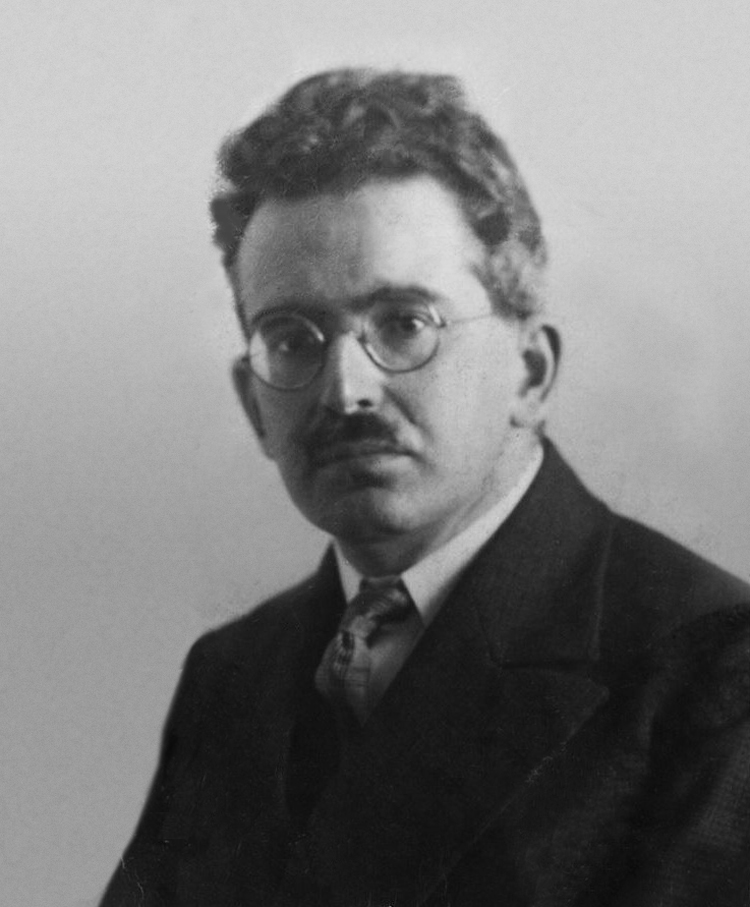
Walter Benjamin
Walter Bendix Schönflies Benjamin (/ˈbɛnjəmɪn/; German: [ˈvaltɐ ˈbɛnjamiːn] ;[7] 15 July 1892 – 26 September 1940[8]) was a German Jewish philosopher, cultural critic, media theorist, and essayist. An eclectic thinker who combined elements of German idealism, Romanticism, Western Marxism, Jewish mysticism, and neo-Kantianism, Benjamin made influential contributions to aesthetic theory, literary criticism, and historical materialism. He was associated with the Frankfurt School and also maintained formative friendships with thinkers such as playwright Bertolt Brecht and Kabbalah scholar Gershom Scholem. He was related to German political theorist and philosopher Hannah Arendt through her first marriage to Benjamin's cousin Günther Anders, though the friendship between Arendt and Benjamin outlasted her marriage to Anders. Both Arendt and Anders were students of Martin Heidegger, whom Benjamin considered a nemesis.[9]
Walter Benjamin
26 September 1940 (aged 48)
Among Benjamin's best known works are the essays "The Work of Art in the Age of Mechanical Reproduction" (1935) and "Theses on the Philosophy of History" (1940). His major work as a literary critic included essays on Baudelaire, Goethe, Kafka, Kraus, Leskov, Proust, Walser, Trauerspiel and translation theory. He also made major translations into German of the Tableaux Parisiens section of Baudelaire's Les Fleurs du mal and parts of Proust's À la recherche du temps perdu.
Of the hidden principle organizing Walter Benjamin's thought Scholem wrote unequivocally that "Benjamin was a philosopher",[10] while his younger colleagues Arendt[11] and Adorno[12] contend that he was "not a philosopher".[11][12] Scholem remarked "The peculiar aura of authority emanating from his work tended to incite contradiction".[10] Benjamin himself considered his research to be theological,[13] though he eschewed all recourse to traditionally metaphysical sources of transcendentally revealed authority.[11][13]
In 1940, at the age of 48, Benjamin died by suicide at Portbou on the French–Spanish border while attempting to escape the advance of the Third Reich.[14] Though popular acclaim eluded him during his life, the decades following his death won his work posthumous renown.[15]
Since the publication of Schriften (Writings, 1955), 15 years after his death, Benjamin's work—especially the essay "The Work of Art in the Age of Mechanical Reproduction" (French edition, 1936)—has become of seminal importance to academics in the humanities disciplines.[85] In 1968, the first Internationale Walter Benjamin Gesellschaft was established by the German thinker, poet and artist Natias Neutert, as a free association of philosophers, writers, artists, media theoreticians and editors. They did not take Benjamin's body of thought as a scholastic "closed architecture [...], but as one in which all doors, windows and roof hatches are widely open", as the founder Neutert put it—more poetically than politically—in his manifesto.[86] The members felt liberated to take Benjamin's ideas as a welcome touchstone for social change.[87]
Like the first Internationale Walter Benjamin Gesellschaft, a new one, established in 2000, researches and discusses the imperative that Benjamin formulated in his "Theses on the Philosophy of History": "In every era the attempt must be made anew to wrest the tradition away from a conformism that is about to overpower it." The successor society was registered in Karlsruhe (Germany); Chairman of the Board of Directors was Bernd Witte, an internationally recognized Benjamin scholar and Professor of Modern German Literature in Düsseldorf (Germany). Its members come from 19 countries, both within and beyond Europe and it provides an international forum for discourse. The Society supported research endeavors devoted to the creative and visionary potential of Benjamin's works and their view of 20th century modernism. Special emphasis had been placed upon strengthening academic ties to Latin America and Eastern and Central Europe.[88]
The society conducts conferences and exhibitions, as well as interdisciplinary and intermedial events, at regular intervals and different European venues:
In 2017 Walter Benjamin's Arcades Project was reinterpreted in an exhibition curated by Jens Hoffman, held at the Jewish Museum in New York City. The exhibition, entitled "The Arcades: Contemporary Art and Walter Benjamin", featured 36 contemporary artworks representing the 36 convolutes of Benjamin's Project.[90]
In 2022, Igor Chubarov, a modern Russian philosopher, specialist in media studies and translator of Benjamin's works into Russian, created the Russian-language Telegram channel "Radio Benjamin".[91]
Benjamin is portrayed by Moritz Bleibtreu in the 2023 Netflix series Transatlantic.[92]
Among Walter Benjamin's works are: